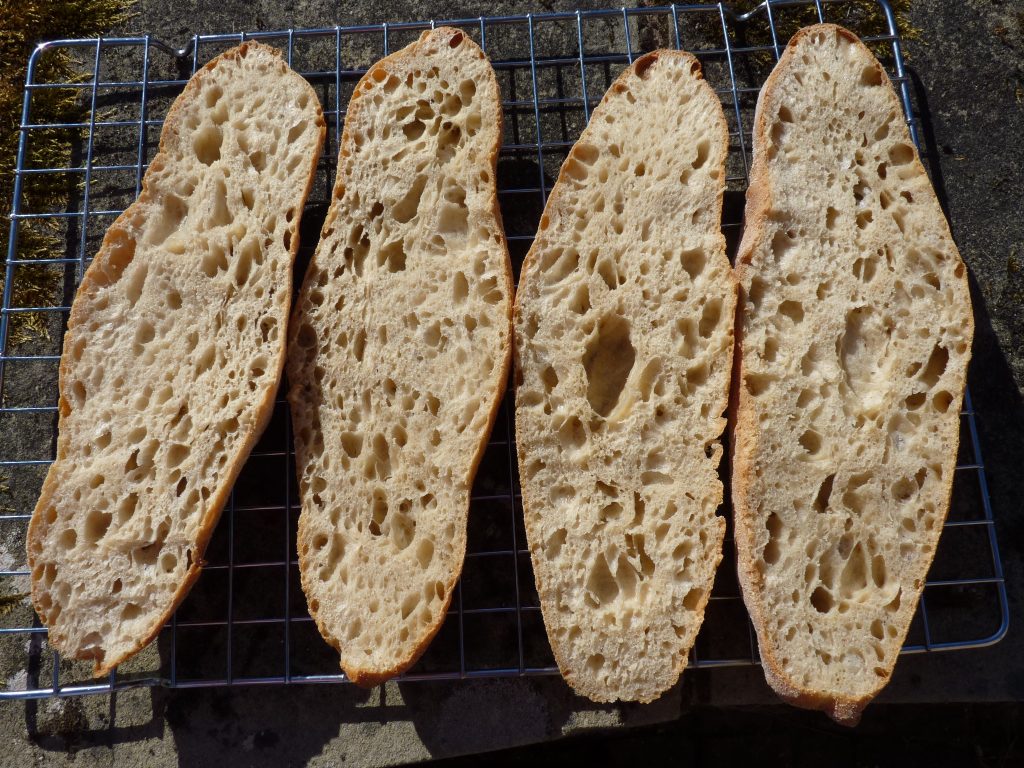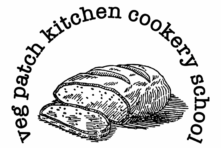There are quite a few myths about bread making that make it seem like a mystical art that is difficult. Making great bread at home is not difficult and it can quite easily fit into your daily routine, even on your busiest day.
So, I am going to bust some of those myths and convince you that making bread at home really is easy.
Myth 1 Making bread takes hours of my time
This is definitely not true.
Bread certainly benefits from longer fermentation. If you allow your dough to ferment over several hours, or overnight in the fridge then your loaf will be tastier and have a better texture than a loaf that is baked from start to finish in 2 hours.
However, the actual time that you spend tending to your bread is a short few minutes a few times during those hours. This is the time that you will actually spend when making a loaf:
- Gathering your ingredients, weighing them out & mixing them (5 minutes max)
- 1st stretch & fold (2-3 minutes)
- 2nd stretch &fold (2-3 minutes)
- 3rd stretch and fold (1-2 minutes)
- Preparing your tin and shaping your loaf (5 minutes max)
- Turning your oven on (10 seconds)
- Putting your loaf in the oven and steaming the oven (1-2 minutes)
- Getting your loaf out of the oven and checking it’s baked and putting it onto a cooling tray (2 minutes)
I am being generous with those timings and it still only takes 22 minutes of your actual time.
Myth 2 I can’t make bread at home that tastes the same as one I can buy at a supermarket
Well, actually this statement is true, because the bread that you make at home will be much better than the one you can buy at the supermarket.
When we bake bread at home (or buy a loaf from a proper bakery) we don’t use bread improvers, emulsifiers and preservatives. We just use flour, water, salt and yeast.
The bread we make at home tastes better and is better for our health. It is infinitely more satisfying to eat.
I promise you that once you get used to eating home made bread you will never want to eat bread bought from a supermarket ever again.


Myth 3 Making bread at home is hard
I know all about this one. When I first started making bread at home, back in 2009, my loaves were terrible. They were dense. They went flat as soon as I put them in the oven and my family would have preferred it if I had put an actual house brick on the table than one of my loaves.
However, I promise that once you understand the basics of making bread you will realise that making bread at home is really easy. It doesn’t take a lot of time (see above) and you can fit the loaf easily around your day.
Follow these principles and you will begin to make great bread:
- Wetter is almost always better. When I first made bread I followed the recipes to the letter and never adjusted the amount of water. Every bag of flour is different, the grain might have been grown in a different country, in very wet or dry weather etc. Lots of variables will affect how the flour absorbs water. Most loaves will be better if the dough is on the wet side (the exceptions to this are bagels, baguettes and croissants where the dough needs to be a bit drier than normal to assist shaping and the final texture). Add more water than you initially think you need. You will see a huge difference in the final resulting loaf.
- Use the fridge to prove your loaf. This will improve the flavour and let you get on with your day. Once you have done your stretch and folds (or kneading) you can pop the dough, well covered, into the fridge for several hours or over night to prove slowly. Dough takes 10x longer to prove in the fridge than it does at room temperature. This slow prove improves the final flavour of the loaf and allows you to get on with your day without worrying about your dough. When you are ready to shape your loaf you can fetch it out, shape it and allow to come to room temperature, prove and bake it, or you can put it back in the fridge to prove again for several hours.
- Practise shaping correctly. If you haven’t already, get a copy of my free ebook TopTips for Making Bread The Easy Way which shows you how to shape a loaf (as well as how to stretch and fold your dough to develop the gluten fully and how to test when a loaf is ready to be baked). Shaping your loaf correctly helps it to expand in the oven rather than flatten out.
- Take a look at my blog post Why does my loaf deflate in the oven? to help you decide when your loaf is ready to be baked.
- My video on How to Make Bread the Easy Way will help to show you how easy it is to make bread at home and will help you to avoid the common pitfalls that surround bread making.
Your “aha’ moment
If I can make bread, then you can too. I was awful at it at first, but I was determined that I wasn’t going to let flour, water, salt and yeast beat me. I hope this article has helped you have your “Aha” moment that almost everybody that comes on my courses has. It is that moment when they realise what they have been doing wrong all along and how easy bread is to make at home after all.
Ready to learn more?
I teach bread making at my cookery school in Ironbridge, Shropshire and you can come along and enjoy a day of baking with me. I also have online bread courses to teach you how to make bread in the comfort of your own home and at your own pace. You can choose from my Bread Made Easy Masterclass, Bread Basics or one of my courses for those already familiar with making bread.

